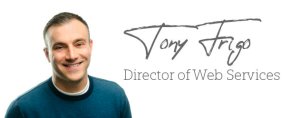Why would anyone want to work in accounting?

Like so many other professions and industries today, accounting is experiencing its fair share of staffing challenges—and has been for some time.
The truth is that it’s not hard to find reasons why people are hesitant to choose the accounting field. And whether those reasons are myth or the result of learned experience, they’re proving to be major barriers in attracting and retaining qualified staff.
So, what are a few of the myths/experiences?
- The work is boring (and so is the culture).
- Tax season hours are long, hard and soul-crushing.
- There’s absolutely no work-life balance.
- It’s a male-dominated profession, operating under old-school principles.
The list could actually be longer, but you get the idea.
While some of this might ring true (whether in the past or currently), the fact is that you have the ability to change this mindset. To transition the conversation away from “Why would anyone want to work in accounting?” to “Why wouldn’t they?”
I sincerely believe there’s no better profession to work in than accounting. So let’s talk about why anyone would be lucky to work in today’s modern accounting firms—and in the process, slay all of these negative myths and unfair stereotypes.
“Too boring to bear”
You know the stereotype: Accountants are introverted nebbishes who think a good time is adding up figures in a spreadsheet. I don’t know about you, but I wouldn’t call musicians like Mick Jagger (I know—that surprised me, too), Robert Plant or Janet Jackson boring. Or mixed martial artist Chuck Liddell, or author John Grisham.
Yes, all of them studied accounting!
Closer to home, there are many Rightworks firms that have worked vigorously to improve their culture and move away from the stereotypical status of too boring to bear. Consider just a few examples of what your fellow members are doing to inject fun into the work culture:
- One firm’s 2021 staff retreat included activities like archery and axe-throwing.
- Another firm developed a cool team-building activity by creating a giant Jenga tournament in a local park.
- Still another firm’s director of member services, whose family owns a traveling circus, opened up involvement in an elephant refuge.
I could go on and on about the innovation that continually brews within our membership and the constant encouragement for staff to embrace work-life balance. I’ve met numerous staff who’ve latched on to the concept of living outside of work—among them wine sommeliers, master-level Candy Crush players, skydivers and motocross enthusiasts. Our firms also participate in good works at the community level—youth programs, charity golf events, Rotary Clubs, local chambers and animal rescues, just to name a few.
I don’t know about you, but if that’s boring, sign me up!
“The long, hard crawl through tax season”
In the last several years, there’s been a definite shift in the scope of services firms offer. Yes, accountants will always need to bring their knowledge and experience to the tax process. However, thanks to the automation of mundane, tedious tasks and the rise of the advisory service model, many firms are breaking free from the tyranny of tax returns and discovering that there’s actually life—and more interesting work—out there in the accounting sphere.
The effects of this shift can be felt all the way through a firm—from partners to administrative staff. Firms can now be more selective about the work they perform. Advisory services can cover anything from payroll and HR services to small-business operations, technology and business succession. So, depending on the types of services offered and the associated marketing tasks, there are more career paths for staff to follow.
For accounting firms that navigate the shift successfully, there’s a whole new and interesting world of possibilities out there—well beyond tax.
“No work-life balance”
Spurred first by a youthful workforce with different priorities and then by the success of remote operations during a nearly two-year pandemic, work-life balance is now a must-have for accounting professionals. And I’m happy to say firms are stepping up to the challenge.
Earlier in this article, I mentioned automation, which for the last several years has gradually helped to reduce the drudgery of tax work and free up staff to concentrate on work that fits within their career ambitions. In many firms, some of that saved time isn’t necessarily being spent on more work, but rather, better, more engaging work.
The pandemic was a wake-up call for most of us. Employees realized life was too short to spend at a place that was working them into the ground, and firm leaders realized that the emotional and physical toll the pandemic took on their staff was real—and spread all the way through the ranks. Firm leaders have learned to be vigilant in recognizing signs of burnout in employees and themselves. As a result, they’re experimenting with flexible work schedules that allow everyone to spend more time with their families or on the projects or causes that are closest to their hearts.
“Not a female in sight”
For years, the stereotypical accountant was an older white male. But the makeup of the accounting workforce is changing. According to the Bureau of Labor Statistics (BLS), in 2019, nearly 62 percent of all accountants and auditors in the U.S. were women.
The Women’s Initiatives Executive Committee of the AICPA released a Firm Gender Survey in 2020 that revealed some fascinating statistics:
- Women represent only 23 percent of the partners in smaller firms, but they’re 42 percent of the CPAs and 47 percent of the professional staff in accounting and finance functions.
- Smaller firms continue to have an above-average percentage of women leaders.
- 39 percent of firms monitor the pay parity between gender, and 85 percent of the firms that monitor acted to close the gaps.
- The number of firms that had a formal gender component in their succession planning rose from 2 percent of firms overall in 2017 to 6 percent in 2019—definitely a step in the right direction.
A 2019 report by Wilson-Taylor Associates, Inc. showed that the percentage of women who sit on management committees grew from 19 percent in 2014 to 33 percent in 2019, and that in 2019 women made up nearly half of directors (41 percent) and senior managers (44 percent).
Of course, there are still many gains to be made among accountants of color. A 2019 AICPA trends survey showed that in 2018, 71 percent of all professional staff at CPA firms were white, while the BLS noted in 2019 that only 5.5 percent of black women, 8 percent of Asian women, and 5.3 percent of Latinas were employed among accountants and auditors.
So we do have more work to do. But especially with a growing number of women at the helm, I have no doubt it will happen.
Summing it all up
The conversation of “Why would anyone want to work in accounting?” has gone on for too long—further perpetuated by two body-and-soul-crushing tax seasons. And while I understand the origin of this mindset, I also understand it’s within our power to change the broad perception of the accounting profession.
The time is now to make changes that matter. Changes that extinguish outdated notions, fuel a positive firm culture, elevate women and people of color within the profession, and put the profession in a positive, engaging light. It’s time we all worked to together to intensify that light.


Tax season planning tips to keep you in control

November is prime time for tax season planning—the time when the Rightworks education team typically sees firms getting busy with tax planning sessions, preparing for year-end and implementing change for the upcoming tax season.
Since all three of these activities are essential to a smooth-running firm, here are some tips to consider as you go through them in your own firm.
Tax planning
- If possible, pre-schedule next year’s meetings now. (Hey, if your dentist can pre-schedule your six-month cleanings, why can’t you set up your client meetings in advance?) This will help eliminate the hassle of trying to find a convenient time later for both you and your client.
- Create a template for client tasks in your communication platform. This will give you an easy way to request information to help you prepare for your client planning meetings.
- Consider the tools you use to assist you with tax planning and tax strategy. Is it time for a change? There are many tools out there that can provide comprehensive reporting—and some that can actually help you create the strategies.
Year-end planning
- Get your client communications scheduled:
- Year-end letter
- Year-end reminders
- Organizers (if applicable)
- Shareholder health/personal use of auto
- 1099 deadlines for clients
- Revisit and revise your process documentation. Consider a process software or OneNote to organize your processes, so you can ensure they’re being followed across the firm.
Tax season planning
- Inventory your firm’s tax-only clients and determine whether it’s necessary to retain all of them. Remember, it’s okay to let people go. Don’t let your feelings get in the way of improving your business.
- Pre-plan your expected pricing changes. If you plan mass price increases over 15 percent, consider a communication to clients ahead of tax season.
- Revisit your tax process and consider the following areas:
- Does every return require a review? If not, label them as either Level 1 or Level 2. Level 1 returns should be able to be done by an experienced preparer and not have to be reviewed.
- How do you handle document intake? Review the options and try to consolidate the ways you receive information.
- Review your up-front scanning process. Consider using a tool that can organize—and potentially fill in—return data.
- Take a closer look at both your different delivery options and your e-signature process. Make the delivery easy, and limit the number of options you make available to your clients.
- Inventory your annual-only business clients. To eliminate the crunch at year-end, plan to convert as many as possible to a monthly/quarterly model this year.
Many of these tips and processes can also be found in our Business Model Basics collection. We recommend reviewing them prior to tax season and year-end to refine and improve your processes.
Final thoughts
In last month’s Thought Leader Tips & Tricks article, Education’s Anna Skowronek posed a thought-provoking question and a candid answer: “Why should we get back to normal? Traditional tax seasons suck!”
She’s not wrong, folks. So I’ll add to her answer with a gentle reminder: Remember, tax seasons only suck if we allow them to. We are in control. And changes like the ones detailed above will help us work towards the tax season we prefer to have. A tax season that doesn’t…well, you know.


Focus. Focus? Focus!

In 2015, a Microsoft study found that humans have an attention span shorter than that of a goldfish. That’s right—when it comes to focusing, Goldy beats us by a solid second of time. If there was an Olympic competition for maintaining focus, we wouldn’t even make it past the prelim trials.
Fast-forward to 2021, and we find our lack of focus follows us even while away from the traditional screen(s) on our desks. In 2019 we spent, on average, more time on mobile device screens than we did on TV. Impressive, given the plethora of binge-worthy series out there.
SQUIRREL!
Still with me? Awesome—you’re beating the odds on maintaining focus. So given a world that lacks focus, what is a modern firm website to do?
A modern firm should not spend time and energy on gimmicks for their website, but rather should invest in a clear and supported singular call to action. Refocus your efforts to win out against shortened attention spans.
Here’s how you can regain some focus with your firm’s website.
Decide on your firm’s call to action (CTA) for the season
- If you’re looking to grow your client base, consider having your CTA direct prospects to a prospecting form.
- If you’re looking to recruit new talent for the season, consider having your CTA direct candidates to your official career posting(s) page.
- If you want to grow a particular industry or service offering (for either prospects or existing clients), consider having your CTA direct to an industry or service landing page.
Implement your CTA
- Focus your initial homepage content around your firm’s CTA. Given today’s low attention spans and average time on site, your initial content is more important than ever.
- Remember that your site—especially its messaging—should parallel your firm’s current efforts and focus.
Support your CTA
- For growing your client base, provide prospects with context on what the process and next steps in that process will be. This could be an initial consultation, a callback or a follow-up email with additional details.
- For employee recruiting, provide context around the firm’s culture, hiring process and timeframe.
- For industries or services, reinforce the pain points you’re solving for their business. Client testimonials are a great way to support this—especially when those testimonials articulate the pain that was solved by working with your firm.
Rightworks Academy members: If it’s time to refresh your firm’s website, contact Sales@rightworks.com to see how you can bring in 2022 with a modern site that will help you stand out from the competition.


Communications in the fourth quarter

We’re in the fourth quarter, and it’s down to the final drive. After being beaten down with extended tax deadlines, the Great Resignation and a global pandemic, everyone is ready to make the push across the goal line.
If you’re reading this, you’ve made it through a tumultuous 20 months like none of us have experienced before. And you’re still standing. As you gear up to make 2022 even better, start by reflecting on what went right and share those important observations with the people who matter most.
First, start by acknowledging your team. They’ve shown ultimate resilience by being flexible, shifting to a virtual work environment, and dealing with the stress and strain of an extended tax season and clients who may have gone through near panic. They’ve gone above and beyond by promoting your firm’s vision to truly care for your clients and guiding them through these difficult months. Thank them for being the reason a successful year is (almost) in the books.
Next, recognize and show appreciation to your clients. They’ve been hit with unexpected challenges and were able to adapt to changing work and communication protocols while coping with their own moments of existential uncertainty. (Remember what it was like being in the restaurant business in the spring of 2020?) Send out a holiday or year-end greeting, special newsletter or modest gift, thanking them for sticking it out and trusting your team to see them through. Let them know you’ve got their backs and are looking forward to helping them succeed in 2022.
Look for win-win opportunities to show appreciation. The boss at the ad agency where I spent my early years had a tradition of making a bulk purchase of holiday poinsettias during the local symphony orchestra’s annual fundraiser and having them delivered to clients. It was a great gesture that not only showed our customers personal appreciation, but support for their community, as well.
Finally—but no less important—show appreciation to those closest to you: Your family and other loved ones. Chances are they’ve seen you at your best and worst over these past 20 months, and their perseverance, support and understanding deserve something special.
As the play clock winds down on 2021, celebrate the people and work that have made the difference for your firm. And let’s get ready to kick off a new year that will be better—every day.


The Starfish and the Spider: The Unstoppable Power of Leaderless Organizations
by Ori Brafman
Delivering Happiness: A Path to Profits, Passion, and Purpose
by Tony Hsieh
The Great Workplace: How to Build It, How to Keep It, and Why It Matters
by Michael Burchell


What we’re working on
The Inspire virtual conference
For those that attended the Inspire conference, watch for announcements when recordings and class handouts are available as resources at Rightworks.com, as well as when CPE certificates are available for download at Rightworks.com.
Event survey
On the heels of Inspire, we’ll be sending out a general event survey to ask folks which events they attend each year and why. Please be on the lookout for this survey in early November.
New Client Ratings module
Rightworks Academy members: You can now access the new Client Ratings tool at Rightworks.com. Log in to your Rightworks account, go to ClientView > Clients and click on the star rating for any client.
Previously, we measured ratings using the metrics in our Client Transition Spreadsheet resource. The new Client Ratings tool will allow you to begin to move away from the spreadsheet to the built-in module in ClientView™.
The first step is to set the overall global metrics that your firm uses to rate clients. Firm Partners and Firm Admin users, you’ll do that under Firm Settings > Client Ratings Questions.
Tip: You can have up to 10 metrics. If you don’t use 10, make sure to enter N/A or similar text for that metric in your settings, so you know not to use that item when rating individual clients.
For more information and guidance, check out the Client Ratings Help article in the Help Center.
Upcoming webinars
- November 3: Staff training: Tax season communication strategies
- November 4: Fall resource update webinar
- November 16: Fall planning webinar
- November 18: Staff training: Recognizing advisory opportunities
See the entire webinar schedule and register at Resources > Events > Webinars in your rightworks.com account.
Member anniversaries
The Rightworks team loves any reason to celebrate our members. So starting this month, we’ll be sharing Rightworks Academy member milestone anniversaries here in Thought Leader.
For November, we’d like to recognize the following firms:
One Year
Cameron Travis & Company, P.C.
James E. Ayers & Associates, Inc.
Axtell Haller & Slachta LLC
Frank Rim, CPA, P.C.
Matt Grodin CPA
Total Advisory & Business Services Inc.
Witcher CPA, PLLC
Alternative Accounting Solutions LLC
Allmon, DiBernardo & Associates
The Sardoni Group
Teitelbaum & Co. CPA
Serra & Associates LLC
Full Value Tax
Neely’s Accounting Services Inc
Donovan CPAs
JP Financial Solutions, LLC
Katherine Overbeck Maxwell, CPA, PLLC
Graham & Jones PLLC
Five Years
Forbes & Company
Kefauver CPA, PC
Baker Davis Roderique
Foresight Accounting
Wagner & Associates, CPA, LLC
Buckingham Advisors
AccountingRx
Jackson & Associates LLC
Stride Advisors
Talpos & Associates, Ltd.
Ten Years
HoneyCPA
Sharamitaro & Associates, P.C.
Magnus Flaws & Company, CPA’S, P.A.
J.S. Richter Ltd.
Stratlign
Christen Souers LLC
FeltonCPA
Congratulations to all on your hard work and success, and we look forward to celebrating many more anniversaries with you and your teams!

